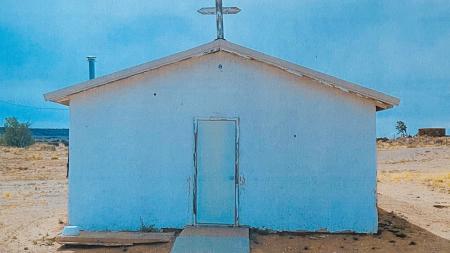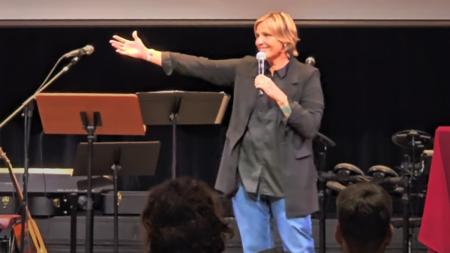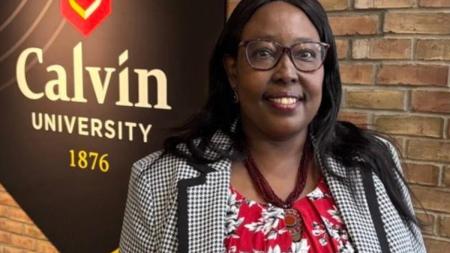Blanket Exercise Can Have 'Ripple Effect'

Spence, far right, drums.
George Spence had the chance to learn about and take part in the Christian Reformed Church’s Blanket Exercise at the Indigenous Family Centre in Winnipeg, Manitoba.
Spence, a staff member of the centre, says he wasn’t sure at first what to expect when a large blanket was unfolded and the exercise began.
But that soon changed and Spence, a First Nations member, got excited by the Blanket Exercise and what, in his estimation, it could mean.
“This was like a new beginning, not just for church people but for others, as a way of teaching about the history of First Nations people,” said Spence, one of more than a dozen participants who recently underwent training to guide others through the Blanket Exercise.
“Leading people through the exercise can teach them about the history and then we can pass it on and on and have a ripple effect,” said Spence.
Originally developed for a Canadian audience, the exercise has been used by the CRC’s Centre for Public Dialogue, Canadian Aboriginal Ministry Committee, and other Canadian agencies for several years.
It has since been adapted for use in teaching the history of native people in the United States.
The recent training was sponsored by the Office of Race Relations, the Office of Social Justice, Centre for Public Dialogue, and Canadian Aboriginal Ministry Committee.
Mark Charles, a Navajo and member of the CRC’s Board of Trustees, helped to lead the recent training.
The Blanket Exercise begins with participants, who represent Native Americans, standing and moving around comfortably on blankets that represent North America.
As the history is narrated, the blankets are gradually folded into smaller and smaller squares, coinciding with events in history that saw Native Americans decimated by disease and forced off their land.
Charles took time during the exercise to face a corner of the room in the CRC’s Grand Rapids, Mich. office to read the words from the U.S. government’s apology to Native Americans, buried on page 48 of the 2010 Department of Defense appropriations bill.
He did this — and in a soft voice — to highlight the way in which the long-awaited apology was offered.
“The wording of this apology and the way it was buried in an unrelated document were not appropriate or respectful ways to speak to the indigenous hosts of this land,” said Charles, who has begun a new ministry called 5 Small Loaves.
The two-day training provided information on seeking the best location to present the exercise, the appropriate times to offer it, and a bulletin insert for churches wishing to hold an exercise.
As for how to encourage people outside of an individual church to attend, Charles said that the best way is to first build relationships with them.
“I work with people who think this (offering the Blanket Exercise) will be a good thing and leave it to them to get people who are interest to come,” he said. “We bring the resources for the exercise.”
Besides use of the blanket, the exercise involves prayer and a time for comments, questions and a debriefing. A period for lament, based on the Book of Nehemiah, is in development.
Near the end of the training for facilitators, participants had a chance to discuss their reactions to the exercise.
“This exercise helps me to better understand the hurt and the history of Native Americans,” said Joyce Jackson, an administrative assistant at Madison Ave. CRC in Paterson, N.J.
“By role-playing and going through the exercise, I realize I want to be an advocate for the heart of the true history.”
Rev. Harry Lew, a college chaplain in Grand Rapids, says that the exercise reminded him of the struggles his own family members who are Chinese faced.
But it also gave him a much deeper appreciation for what Native Americans, who were here on his continent first, had to endure. “I feel gratitude to God for them,” he said.
Rev. John Caicedo, a CRC pastor in Fontana Calif., says the blanket exercise helps to make the words contained in the Bible about injustice even more real, reminding him of how God speaks to all people in all circumstances over time.
“My own Hispanic people have their own injustice,” he said. “This exercise provides a way for us to have a dialogue about the things of the past and to help move us into a better, Christ-like future.”


